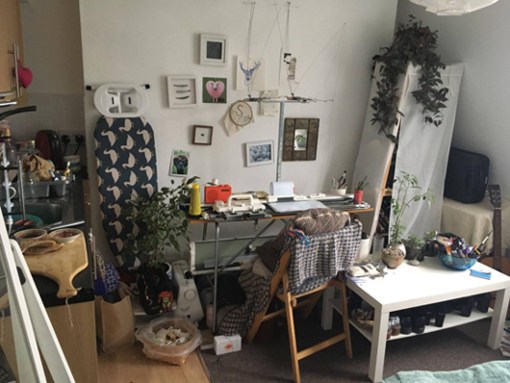A report suggests that lax planning regulations are shrinking the size of new homes even further; but is this a bad thing?
According to research by Sellhousefast.uk, the average 3-bedroom home in the UK measures 88m2 – 5m2 smaller than the regulatory minimum. The report claims that councils are approving ex-commercial property to be converted into ‘micro homes’, sized between 13- 16m2; the size of an average bedroom.
Sellhousefast.uk investigated the regulations for property sizes in the UK, and assessed the guidelines which came into force in 2015, requiring flats to be at least 37 m2; and sets out minimum guides on new homes. However, the government has relaxed the planning regulations to allow the conversion of office buildings into residential property, without needing to abide by minimum size standards.
As a result, sellhousefast.uk found that these buildings fall far below the recommended size. Last year ex- commercial property provided 12% of new homes in England; a significant rise for the market.
The findings revealed that the average three-bedroom house in the UK is just 88m2, if you exclude properties in London. The recommended size of new homes (three bedroom) as stipulated is 93 m2.
“We are seeing smaller spaces for individual homeowners and families, living in tighter homes, as consumers are forced to accept what the market offers,” Robby du Toit of Sell House Fast, said. “They are prepared to accept less than they want, because house prices are substantially high.”
However, some developers argue that loosening space standards gives millennials the opportunity to grasp at the housing ladder as it continually moves upwards out of reach. DVDs and CDs ejected to the cloud, a new generation tends to pack lighter than the last, and less space is needed for storage. Appliances and furniture are also being redesigned by upmarket retailers such as John Lewis, who launched a range of solutions for smaller homes this year.
“Millennials who have been priced out of larger properties and forced to rent can see light at the end of the tunnel,” said Martin Skinner, CEO of Inspired Asset Management and Inspired Homes. “Today’s affordable new home may be smaller, but it’s smarter and it’s one they can call their own. This approach represents an easy solution to what has become a major problem for the London property industry.”
The data from Sellhousefast.uk revealed that Yorkshire has the smallest homes, at an average of just 84m2 (3 bedroom), and London has the largest at 108.5 m2; although London homes continually witness a decrease in homes adhering to the average size, compared to four years prior.
Despite this, London properties are still larger than the minimum recommended size.
Interestingly, despite the average property size in London is above average, UK homes in general below the regulatory minimum size.
Sellhousefast.uk investigated the size of British homes compared to Europe and found the UK has among the smallest homes across Europe and the smallest size regulatory allowances.
However, for some residents in the UK, micro-homes are ideal, as they are often cheaper to rent, and a lot smaller to maintain. “There is a rising culture in spending less time at home, especially for the young where the house is just a house – somewhere to sleep, eat and leave important possessions,” said du Toit.
“For such populations, these homes are ideal,” he added. “However, for families who need substantial space these homes are not viable and the lack of suitable options out there is making people delay buying their own home and having children etc.”




